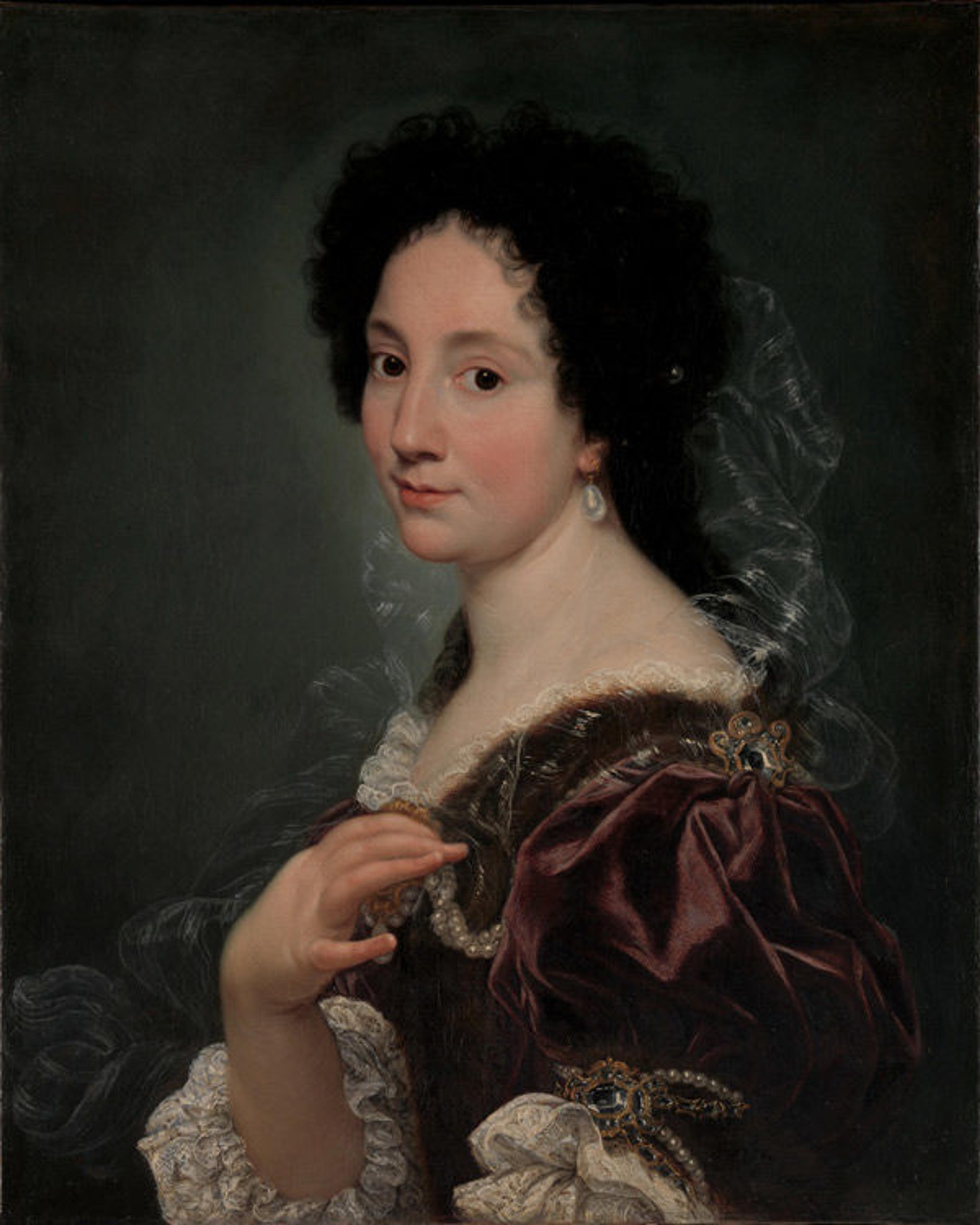
Painting formerly thought to show Beatrice Cenci (1577–1599) and to have been painted by Guido Reni (1575–1642)
«"Almost invariably," writes Stendahl in the Italian Chronicles, "foreigners coming to Rome ask to be taken, at the outset of their tour of inspection, to the Barberini gallery; they are attracted, the women especially, by the portraits of Beatrice Cenci and her stepmother." Beatrice, of course, not only had possessed beauty, but she had a story, having been publicly executed for the murder of her cruel, molesting father.
What was thought to be her portrait (above) was painted by the "Divine Guido Reni" (1575–1642). Reni was a great artist, but the picture Stendahl admired was not, in fact, by him and certainly cannot hold a candle to the portrait of an unknown beauty recently given to the Metropolitan Museum and now hanging—following its cleaning and reframing—in gallery 623.»

Giovanni Battista Gaulli (Il Baciccio) (Italian, 1639–1709). Portrait of a Woman, ca. 1670s. Oil on canvas. The Metropolitan Museum of Art, New York, Gift of Álvaro Saieh Bendeck, Jean-Luc Baroni, and Fabrizio Moretti, in honor of Keith Christiansen, 2014 (2014.277)
The artist of this entrancing work is Giovanni Battista Gaulli (1639–1709). He had arrived in Rome from his native Genoa at the age of eighteen, and like so many aspiring painters before and since, he worked for a dealer. Luckily, his talent was recognized by the great sculptor Gian Lorenzo Bernini (1598–1680), and from that point on, the artist went from success to success, receiving some of the most prestigious and demanding commissions in the papal city. He also became the most sought-after portraitist. His biographer informs us that "he painted all the cardinals, all the important people of his day who came to Rome and the seven popes who reigned from Alexander VII to Clement XI; and in this work he showed, in truth, great art and singular mastery." Only a handful of portraits of women by Gaulli survive, and of these, the Metropolitan's is far and away the most beautiful. This raven-haired beauty, with her sidelong glance and her unconscious toying with her pearls, is intent on seducing the viewer. It is impossible not to be captivated by her.
How did Gaulli do it? Well, his biographer tells us that Gaulli learned from Bernini the procedure of encouraging his sitters not to hold a pose but to move about naturally, speaking and carrying on their activities, since only in this way could he produce a true likeness and bring out the best qualities of the subject. Of course, he also had the painter's gift of flattery: no blemishes, no stray strands of hair, and those delicately pliant fingers that must have recalled to seventeenth-century viewers the ancient statue of the Venus de' Medici—that "miracle of art," as it was thought. (The wildly admired statue was transported from Rome to Florence in 1677 because the pope disapproved of the lascivious thoughts and behavior he was sure it inspired.) In this case, Gaulli was certainly following the lead of Bernini, a true connoisseur of beauty, both in art and life.

Venus de' Medici, Galleria degli Uffizi, Florence. Image courtesy of The Museums of Florence
Related Link
Department of European Paintings